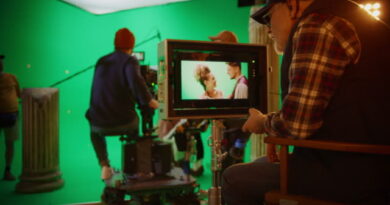The Evolution of Movie Theaters: From Silent Screens to Immersive Experiences
Introduction:
Movie theaters have been an integral part of the entertainment industry for over a century. From the early days of silent films to today’s cutting-edge multiplexes and IMAX screens, the movie theater experience has evolved significantly. In this article, we will take a journey through time to explore the history and transformation of movie theaters, highlighting their cultural impact and the challenges they face in the digital age.
I. The Birth of Movie Theaters:
The concept of the movie theater can be traced back to the late 19th century when inventors like Thomas Edison and the Lumière brothers introduced the world to moving pictures. Early theaters, known as nickelodeons, were simple storefronts where patrons paid a nickel to watch short silent films. These humble beginnings marked the birth of an industry that would soon captivate the world.
II. The Golden Age of Cinema:
The 1920s and 1930s saw the emergence of grand movie palaces, characterized by opulent architecture, intricate décor, and elaborate screenings. The era’s Hollywood stars became household names, and attending the cinema became a glamorous social activity. Iconic theaters like Grauman’s Chinese Theatre in Los Angeles and Radio City Music Hall in New York City symbolized the golden age of cinema.
III. The Transition to Sound:
The introduction of sound to movies in the late 1920s with films like “The Jazz Singer” marked a significant turning point. This transition required theaters to adapt, leading to the development of soundproofed auditoriums and the replacement of silent film projectors with synchronized sound systems. “Talkies” transformed the cinematic experience, forever altering the landscape of movie theaters.
IV. Multiplexes and the Home Entertainment Challenge:
The 1960s and 1970s witnessed the rise of multiplex theaters, which allowed for the screening of multiple films simultaneously. This shift in the industry aimed to cater to diverse audience tastes and increase profitability. However, the advent of VCRs and home entertainment systems posed a formidable challenge to movie theaters, leading to innovations like stadium seating and surround sound to entice audiences back to the big screen.
V. The Digital Revolution:
The 21st century brought about another major transformation in the movie theater experience with the widespread adoption of digital projection. Digital technology offered enhanced image quality and allowed for 3D and IMAX presentations, providing audiences with immersive experiences that could not be replicated at home. Movies like “Avatar” demonstrated the potential of digital cinema to draw crowds.
VI. Challenges and Innovations:
Despite the digital revolution, movie theaters have faced challenges in recent years. Streaming services and the convenience of watching movies at home have threatened their traditional business model. In response, theaters have experimented with innovations like dine-in theaters, luxury recliner seating, and live events to offer unique experiences not available on streaming platforms.
VII. The Future of Movie Theaters:
The COVID-19 pandemic had a profound impact on the movie theater industry, forcing many theaters to close temporarily or adapt to new safety protocols. As we move forward, the industry faces questions about its long-term viability. Will audiences continue to flock to theaters for the communal experience of watching films on the big screen, or will the convenience of streaming services ultimately prevail?
Conclusion:
The history of movie theaters is a testament to the resilience and adaptability of the film industry. From nickelodeons to grand palaces and the digital age, movie theaters have continuously evolved to meet the changing demands of audiences. While challenges persist, there is no denying the enduring appeal of the cinematic experience. Movie theaters may continue to adapt and innovate, ensuring their place in the cultural landscape for generations to come.




